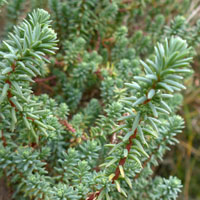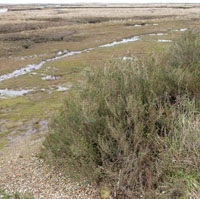Amaranthaceae (includes previous Chenopodiaceae) . . . . . Goosefoot family
A family of generally dull-coloured weedy plants that incorporates the previous Chenopodiaceae, and includes:
Amaranthus (Pigweeds); Atriplex (Oraches); Beta (Beets); Chenopodium (& Oxybasis, Chenopodiastrum, Blitum (Goosefoots) - including the aliens in Dysphania); and saltmarsh genera such as Suaeda (Sea-blites), Salsola (Saltworts), Salicornia and Sarcocornia (Glassworts)
Many spp. very variable and difficult to distinguish; Although vegetatively similar, goosefoots (Chenopodium) and Oraches (Atriplex) can be separated in fruit as the latter have very characteristic triangular fruit
Select nearest:
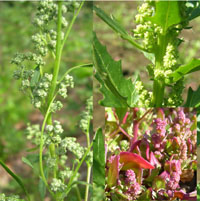
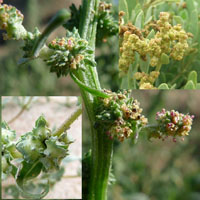
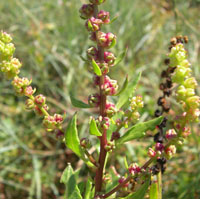
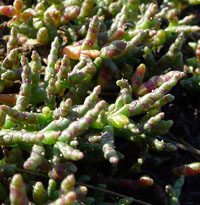
5-sided fr
triangular fr
5-ridged fr
Podgy succulent
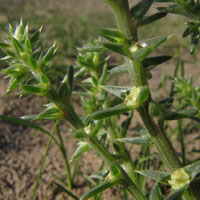
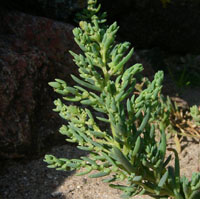
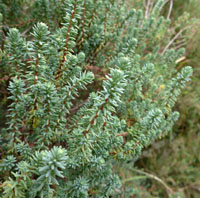
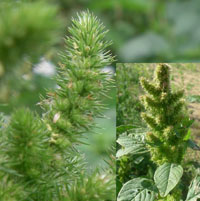
Spiny lvs
Narrow succulent lvs
Shrub
Amaranthus . . . . . Pigweeds
As many as 30 spp. have been recorded in the BI and not easy to separate as variable and hybridise (depends on detailed examination of flowers and seeds); Three typical sample spp. are shown below
Amaranthus caudatus . . . Love-lies-bleeding
Frequent on tips and waste places, esp. S
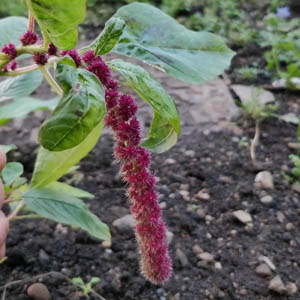
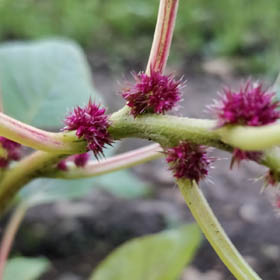
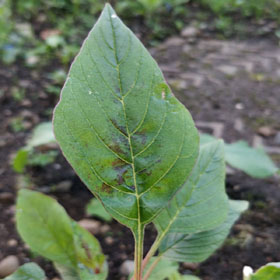
Amaranthus deflexus . . . Prostrate Pigweed
Rare casual in CI and S Br
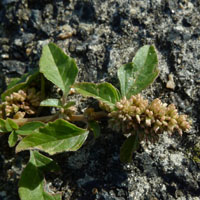
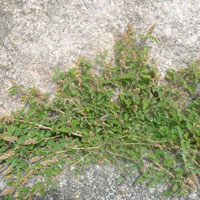
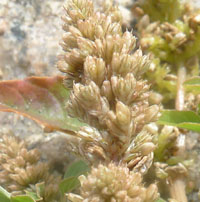

Amaranthus retroflexus . . . Common Amaranth
Hairy annual, casual in waste places and arable land; scattered mainly in the S and CI
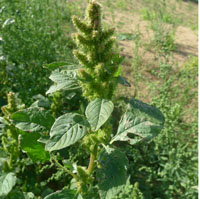

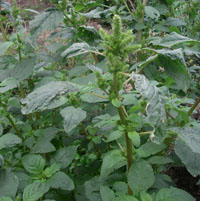
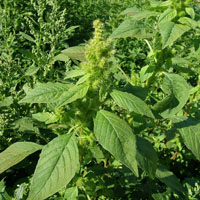
Amaranthus hybridus . . . Green Amaranth
A. hybridus has looser panicle & is +/- hairless while A. retroflexus has hairy stems and leaves (and translucent dots on lvs);
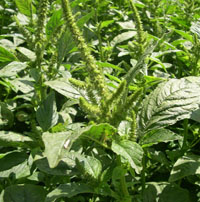
Atriplex . . . Oraches
More than 20 spp. have been recorded
Select nearest:
Atriplex prostrata
Atriplex glabriuscula
Atriplex patula
Atriplex laciniata
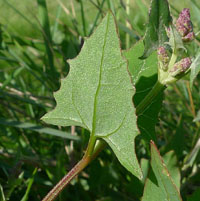
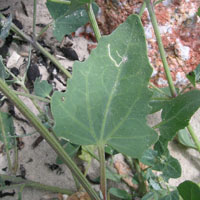
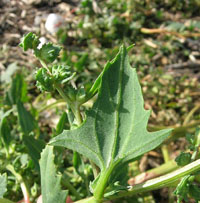
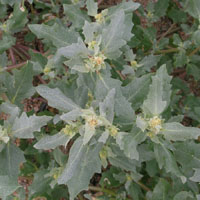
Atriplex littoralis
Atriplex x hulmeana
Atriplex halimus
Atriplex portulacoides
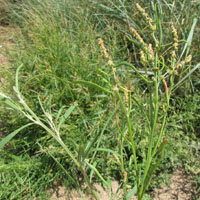
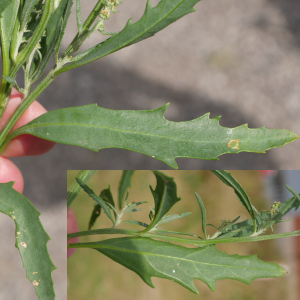
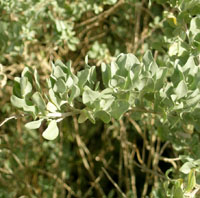
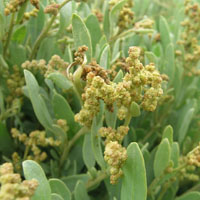
Atriplex glabriuscula . . . Babington's Orache
Usually forming large prostrate mats, often reddish, lvs nearly to end of flowering shoots; Common around the coasts
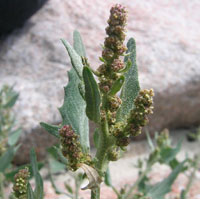
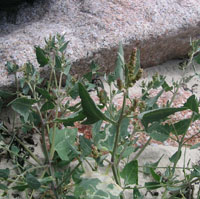

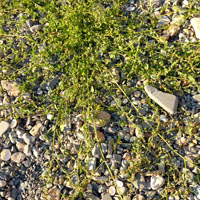
Atriplex halimus . . . Shrubby Orache
Shrubby plant - up to 2 m tall; local by the coast in CI and along S coast
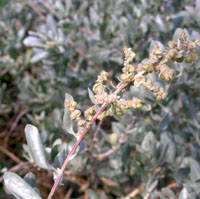
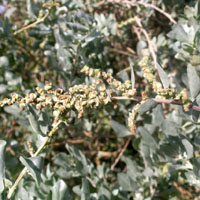
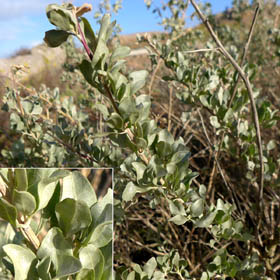

Atriplex laciniata . . . Frosted Orache
On coasts around BI

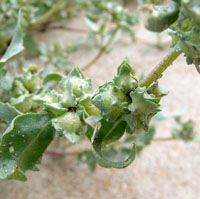

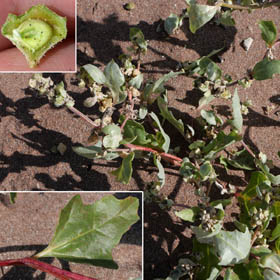
Atriplex littoralis . . . Grass-leaved Orache
Narrow, long leaves (sometimes slightly toothed); commonest in the E; on coasts but spreading inland along roads
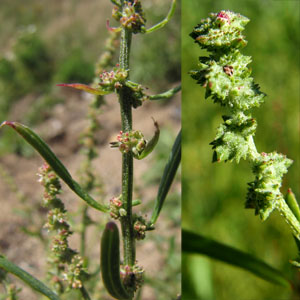

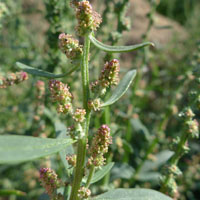
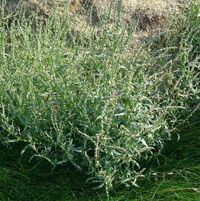
A hybrid of the above, that occurs rather locally with parents is:
Atriplex x hulmeana . . . A hybrid Orache (A. prostrata x A. littoralis)
Narrow, long clearly toothed leaves; very local on coasts

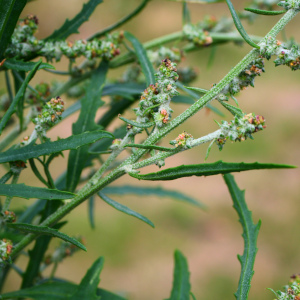
Atriplex patula . . . Common Orache
Leaves with points swept forward; Waste ground throughout BI
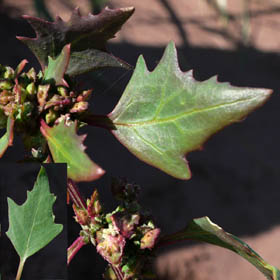
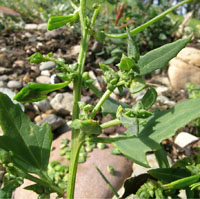

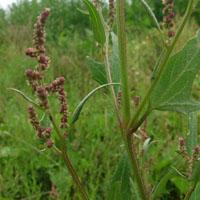
Atriplex portulacoides . . . Sea Purslane
Similar to Atriplex halimus but smaller, prostrate; widespread on coasts N to S Sc
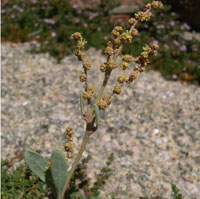
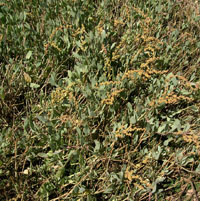
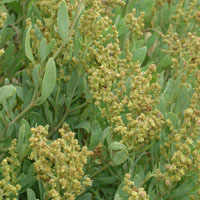

Atriplex prostrata . . . Spear-leaved Orache (= A. hastata)
Bottom leaves clearly have horizontal base (right angles to petiole), fruits split to near base
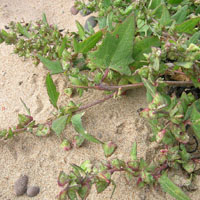

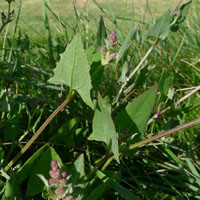
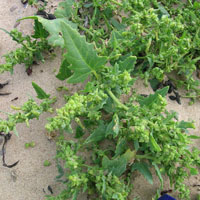
Among other spp. are: A. hortensis (Garden Orache - large elliptic papery bracteoles, scattered); A. pedunculata (Pedunculate Sea-purslane with long-stalked fruits, Essex); A. longipes (Long-stalked Orache - long-staked large fruits); A. praecox (Early Orache - usu. <10 cm and reddish, W Sc); A. suberecta (Australian Orache)
Beta . . . Beets
Beta vulgaris ssp. maritima . . . . Sea Beet
Very good to eat as spinach; thick succulent lvs; common close to the sea exc. N Sc
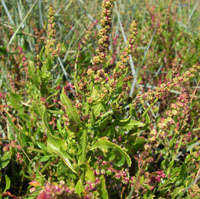
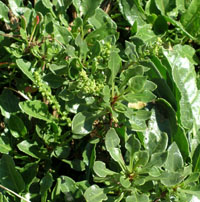
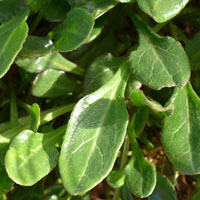

Beta vulgaris ssp. vulgaris . . . . Sugar Beet
A scattered relic of cultivation; swollen roots; thinner larger lvs (Beetroot is the same subsp., as is Mangelwurzel - pic3)
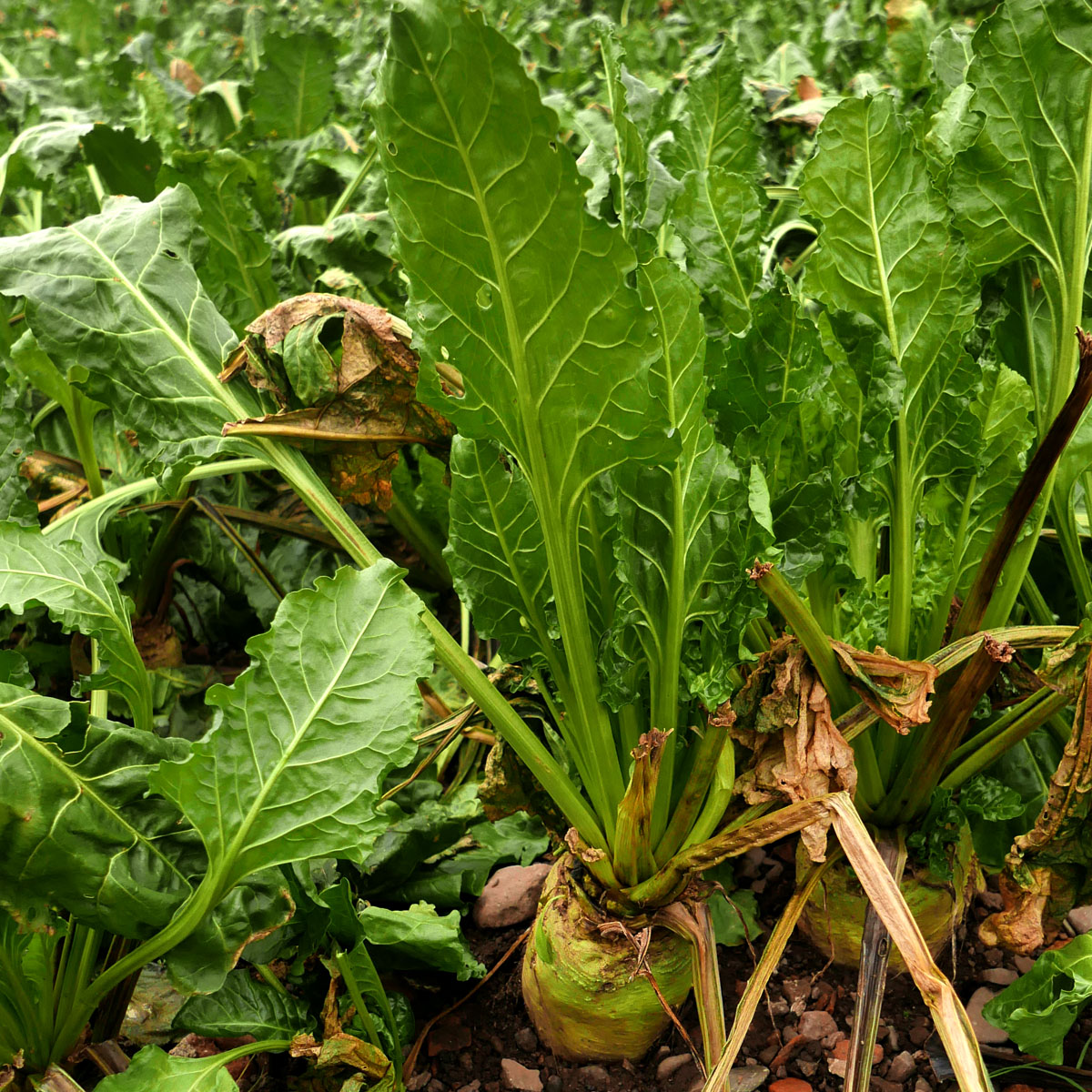
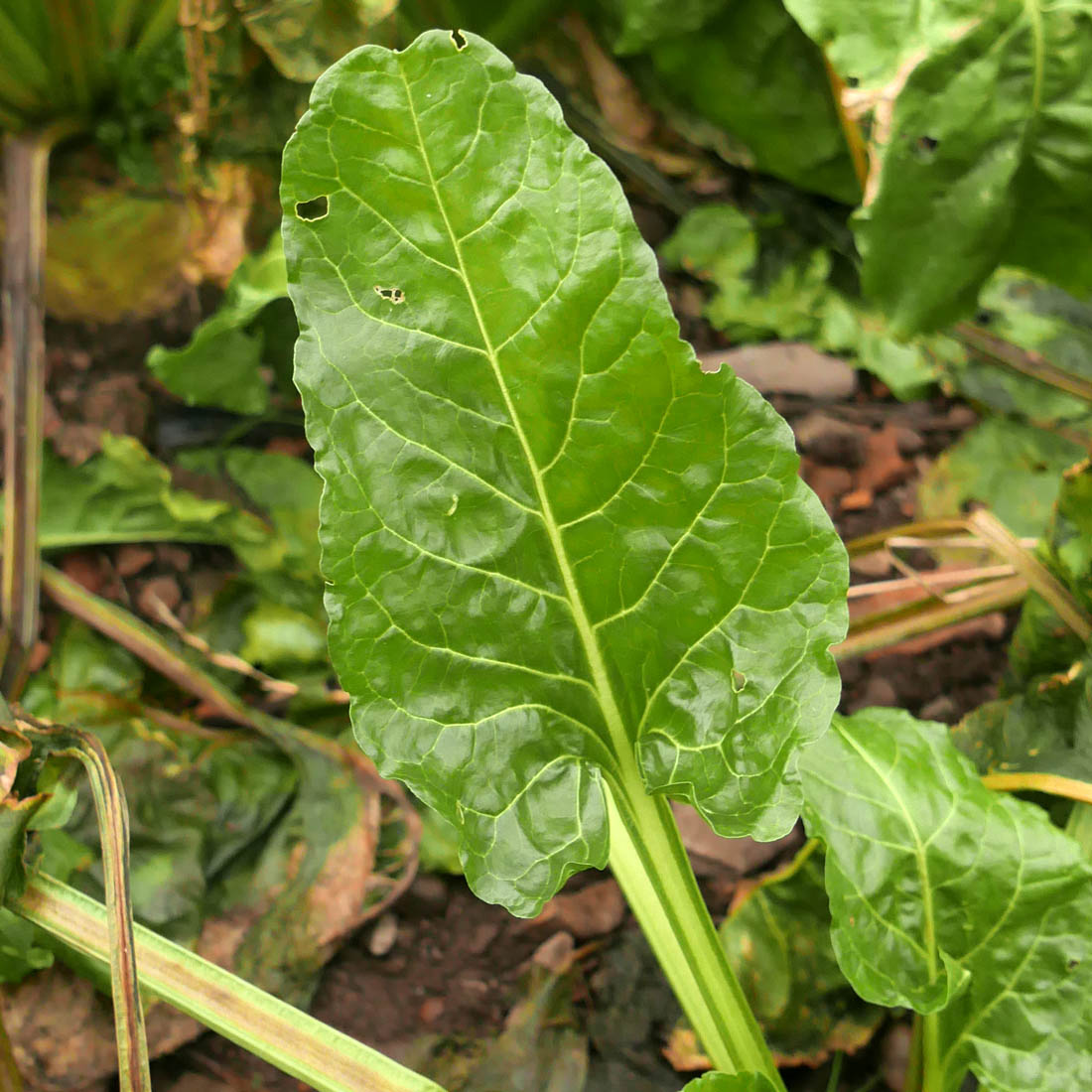
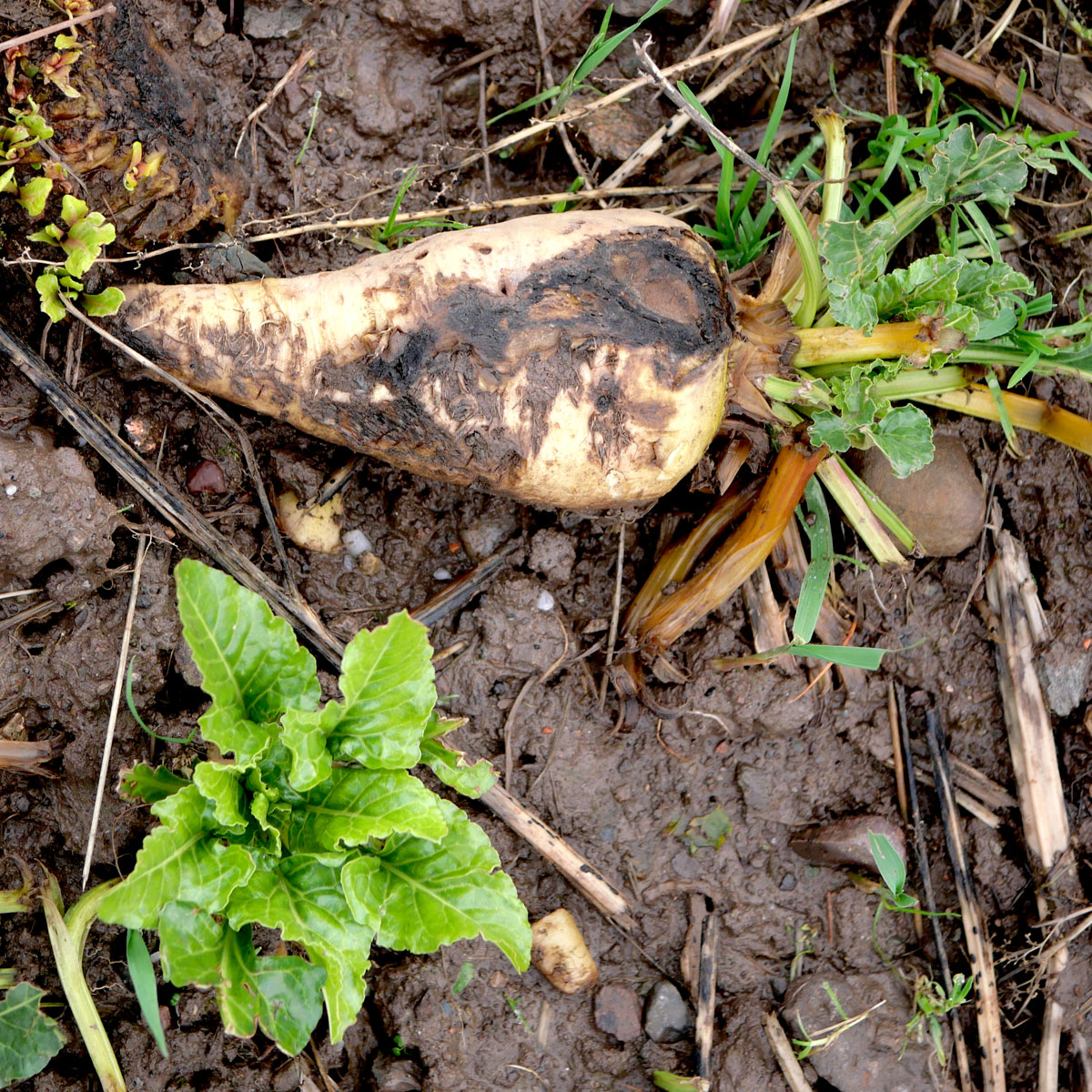
(Including Blitum, Chenopodium, Chenopodiastrum, Lipandra & Oxybasis) . . . . Goosefoots
Select nearest:
C. album
Chenopodiastrum murale
C. ficifolium
O. rubra

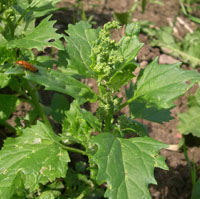
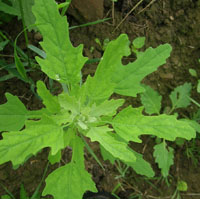
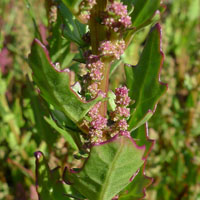
L. polysperma
O. chenopodioides
C. quinoa
C. giganteum
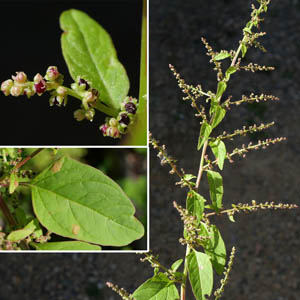
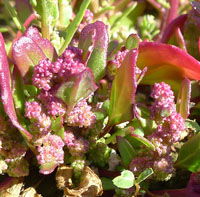
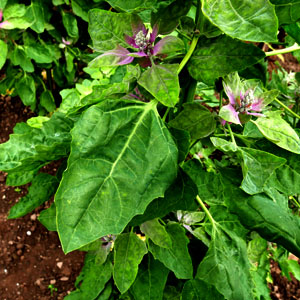
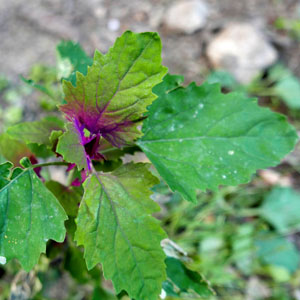
Chenopodiastrum hybridum
C. strictum
B. bonus-henricus
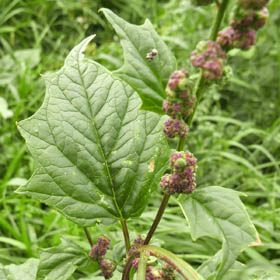
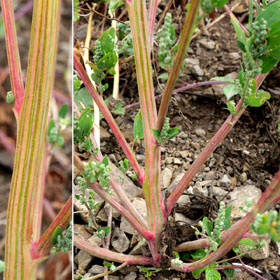
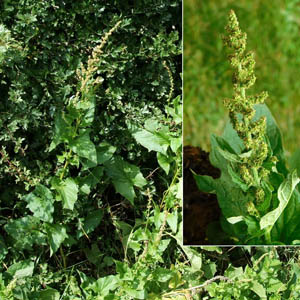
Blitum (was in Chenopodium) . . . Goosefoots
Key to goosefoots
Blitum bonus-henricus . . . . Good-King-Henry
Relatively large triangular leaves with wavy (not toothed) edges; scattered and locally common by farm buildings (Photos- C Hutchinson)

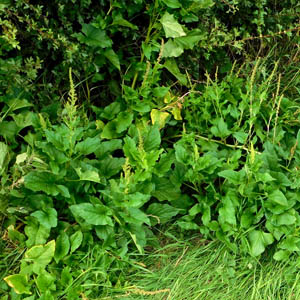
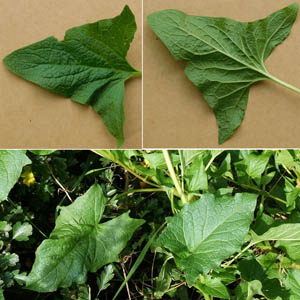
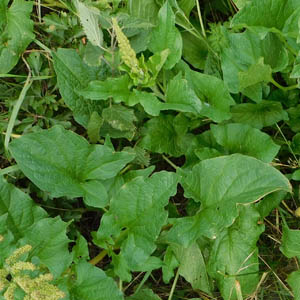
Also the rare casual: B. capitatum (Strawberry-blite)
Chenopodiastrum (was in Chenopodium) . . . Goosefoots
Key to goosefoots
Chenopodiastrum hybridum . . . Maple-leaved Goosefoot
Uncommon on arable and waste ground, esp in S Br & CI
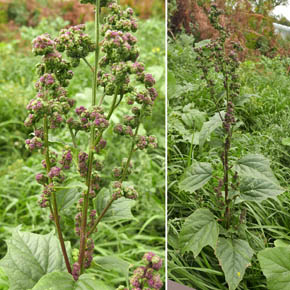
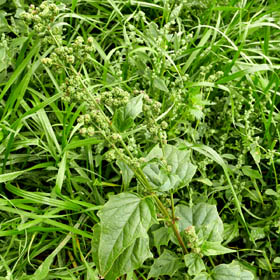

Chenopodiastrum murale . . . Nettle-leaved Goosefoot
Common in CI and S En, more scattered to N
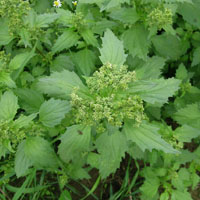
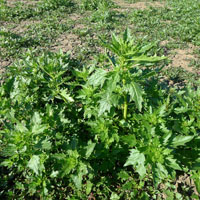
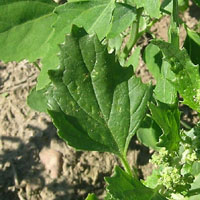

Chenopodium . . . Goosefoots
Key to goosefoots
Chenopodium album . . . . Fat-Hen
Common on waste and cultivated ground; variable, up to 1.5 m tall

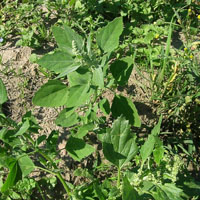

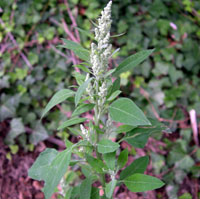
See also C. strictum
Chenopodium ficifolium . . . Fig-leaved Goosefoot
Distinguished from C. glaucum (Oak-leaved goosefoot) by Local, casual mostly near the sea
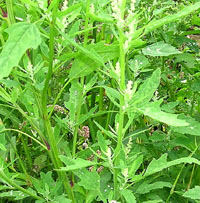
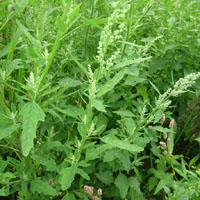

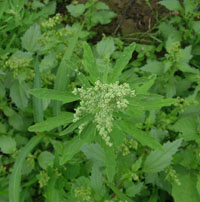
Chenopodium giganteum . . . . Tree Spinach
Up to 2 m tall with much red-purple colouring

Chenopodium quinoa . . . . Quinoa
An increasingly planted crop that sometimes survives; sometimes has purple young lvs like C. giganteum
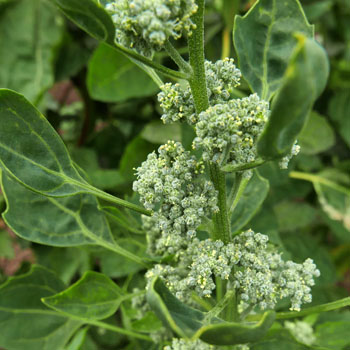
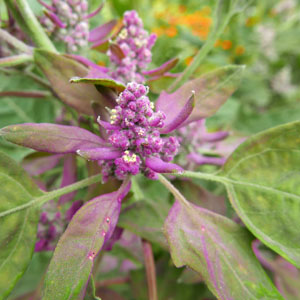

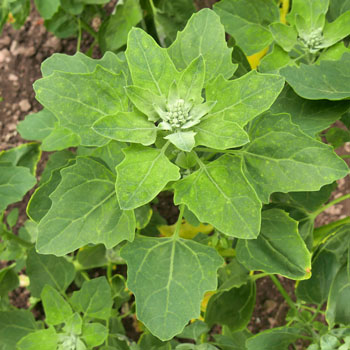
Chenopodium strictum . . . . Striped Goosefoot
Casual on tips and waste places, esp. in CI and S Br; similar to C. album but with striped stem and lvs parallel-sided

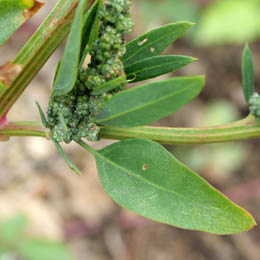
Lipandra (was in Chenopodium) . . . Many-seeded Goosefoot
Key to goosefoots
Lipandra polysperma . . . Many-seeded Goosefoot
Common in CI and S En, more scattered to N En; square (usually) red stems and untoothed oval lvs

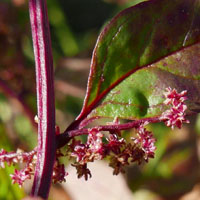
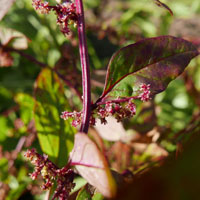
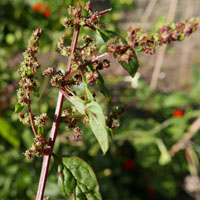
Oxybasis (was in Chenopodium) . . . Goosefoots
Key to goosefoots
Oxybasis rubra (was Chenopodium rubrum) . . . Red Goosefoot
Common in the S decreasing to C Sc
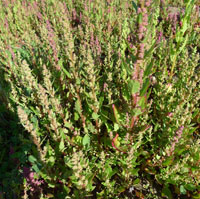

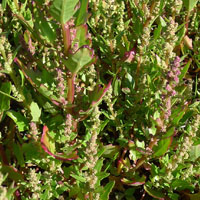
Oxybasis chenopodioides . . . Saltmarsh Goosefoot
Locally common on coasts in CI and London area; usually prostrate, v. red +/- triangular lvs

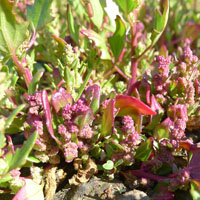
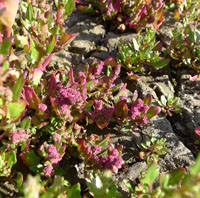
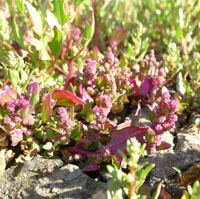
Other spp. include the v local O. glauca
Salsola . . . Saltworts
Salsola kali . . . Prickly Saltwort
Beaches around the BI
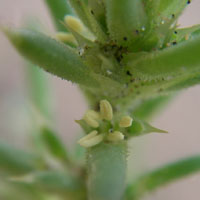

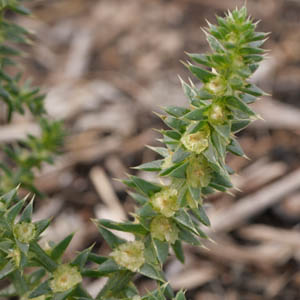
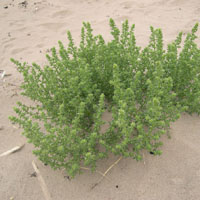
Salicornia . . . Glasswort
A very variable group of succulent saltmarsh plants (and also the similar Sarcocornia), usually treated as three aggregate spp., though some have further divided them.
Salicornia europaea, agg. . . . Glasswort
Saltmarshes around all the coasts of BI; the last two pictures show Salicornia ramosissima which is rather rare and has been separated out by some
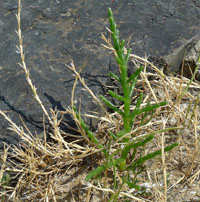
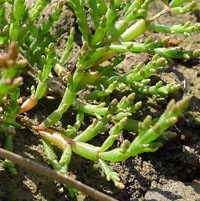

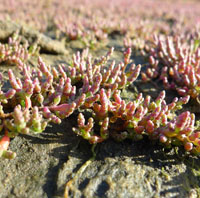
Suaeda . . . Seablites
Suaeda maritima . . . Annual Seablite
On saltmarshes around the coast
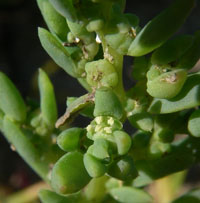

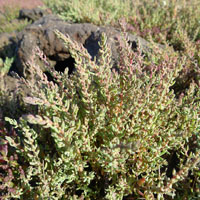
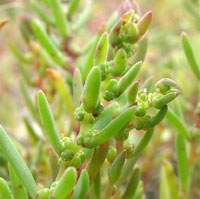
Suaeda vera . . . Shrubby Seablite
A woody plant, local on upper saltmarshes, mainly around East Anglia
